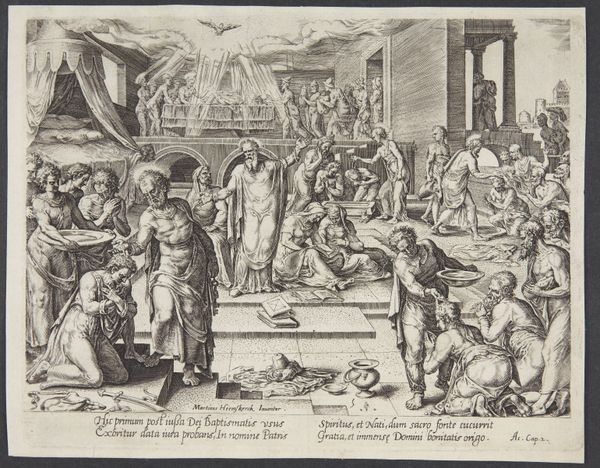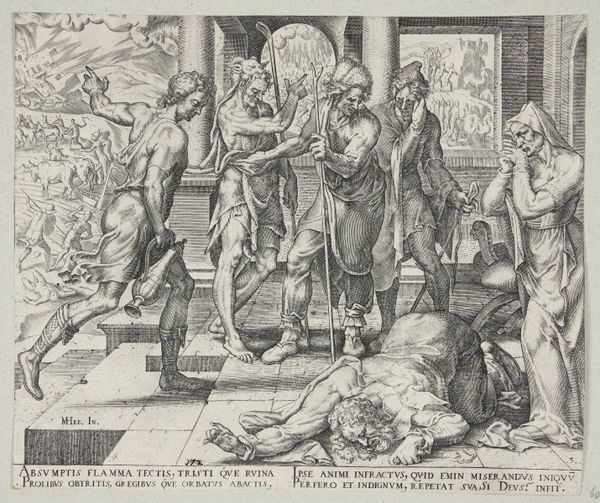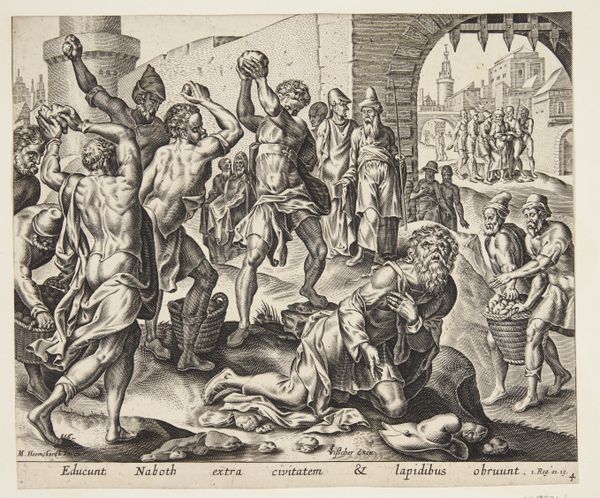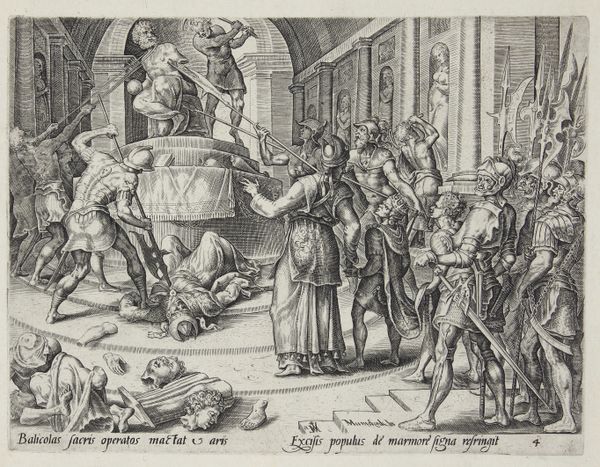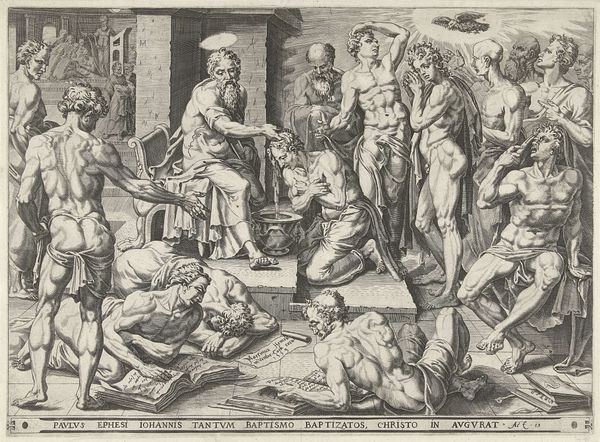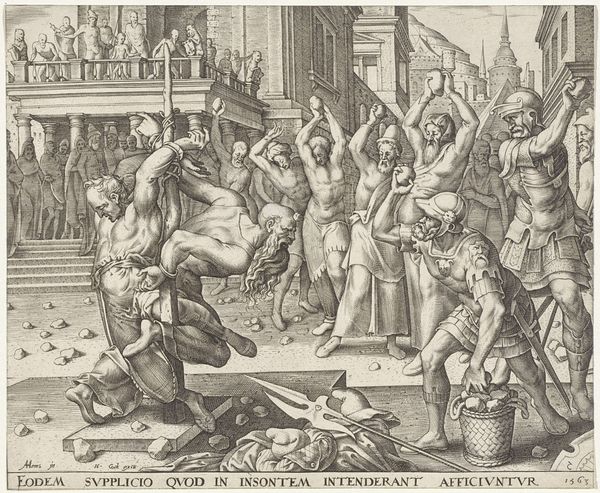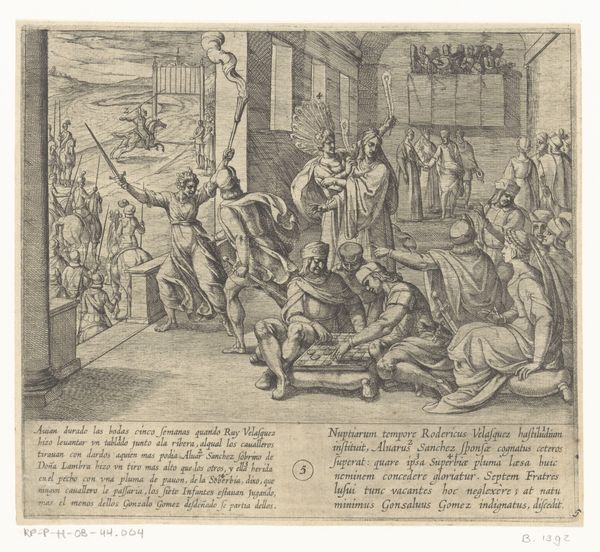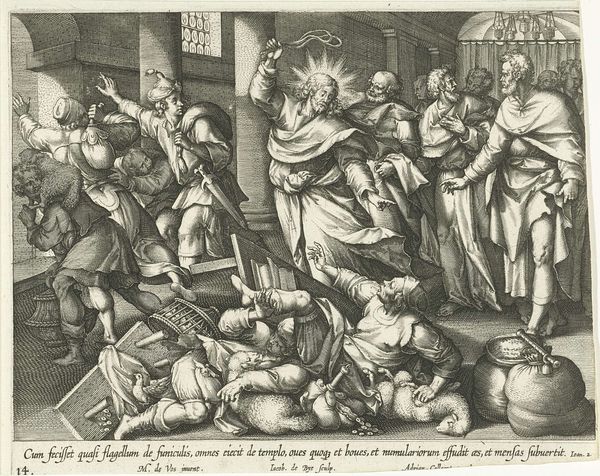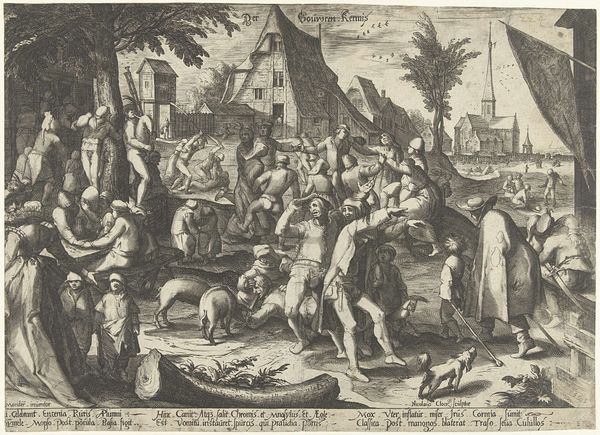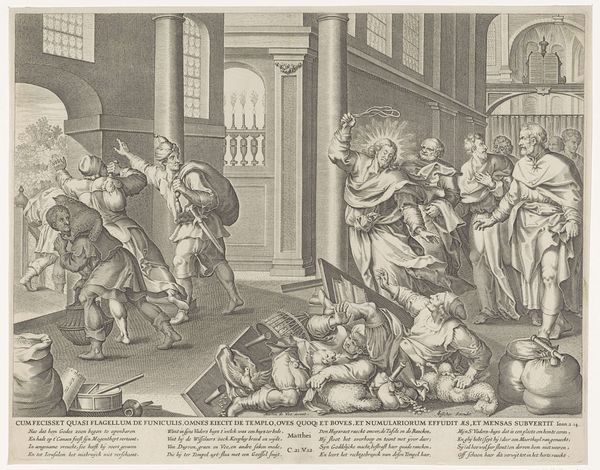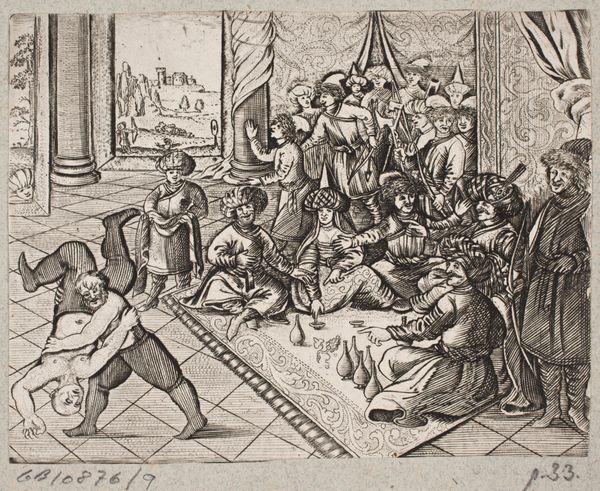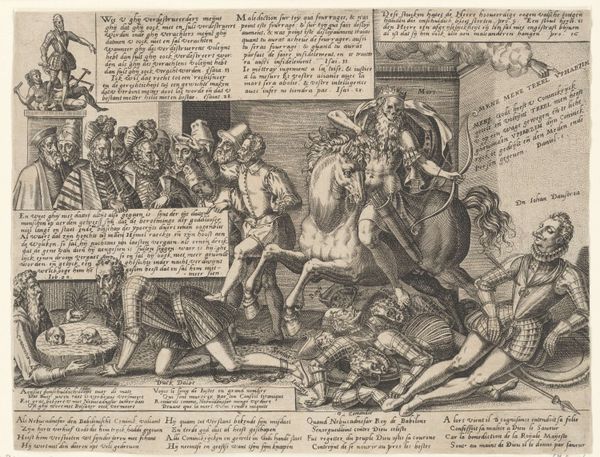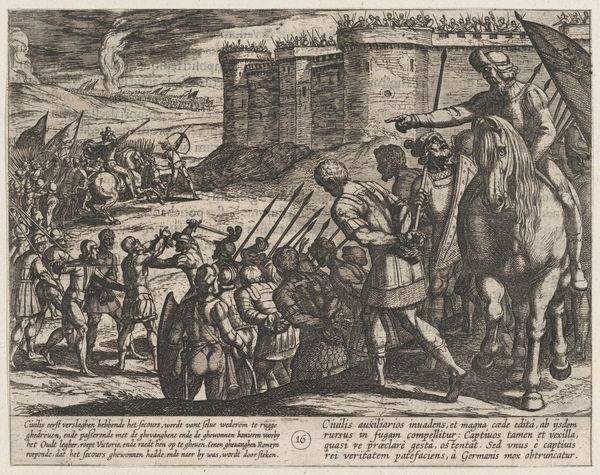
Blessed are the meciful. Tobit burying the dead, clothing the naked and feeding the hungry 1564 - 1567
0:00
0:00
print, engraving
# print
#
figuration
#
history-painting
#
northern-renaissance
#
engraving
Dimensions: 208 mm (height) x 245 mm (width) (monteringsmaal), 212 mm (height) x 243 mm (width) (bladmaal)
Curator: Standing here, I am struck by the density and drama contained within this relatively small engraving. Editor: Yes, it's an intense piece. The crosshatching creates a sort of somber moodiness, especially given the scene's grim subject matter. Curator: This engraving, titled "Blessed are the merciful: Tobit burying the dead, clothing the naked and feeding the hungry," was created between 1564 and 1567 by Harmen Jansz. Muller. It’s currently held at the SMK, the Statens Museum for Kunst. Editor: A powerful image indeed, highlighting not one, but three of the seven Acts of Mercy, rooted in medieval Christianity and concepts of civic virtue. But even beyond these virtues, consider how in times of rampant inequality, some people continue to fall through the cracks, necessitating that we tend to each other and to those society marginalizes. Curator: And the story of Tobit really underscores that. He was known for his piety and acts of charity, even in the face of great adversity, even risking his own safety. Look at the detail given to each of the figures. Editor: Exactly! You see the social hierarchy, rendered vividly through the attention given to differences in wealth, gender, age, and race. The rendering makes this accessible for everyone, regardless of their station. You're right, Tobit models a certain commitment to social justice, challenging oppressive structures and uplifting the vulnerable. Curator: I think you’ve articulated so beautifully how this seemingly simple print offers a potent reflection on social duty and spiritual grace. Editor: Absolutely. Harmen Jansz. Muller captured the timeless human spirit, in all its struggles and all its aspirations for collective liberation.
Comments
No comments
Be the first to comment and join the conversation on the ultimate creative platform.
